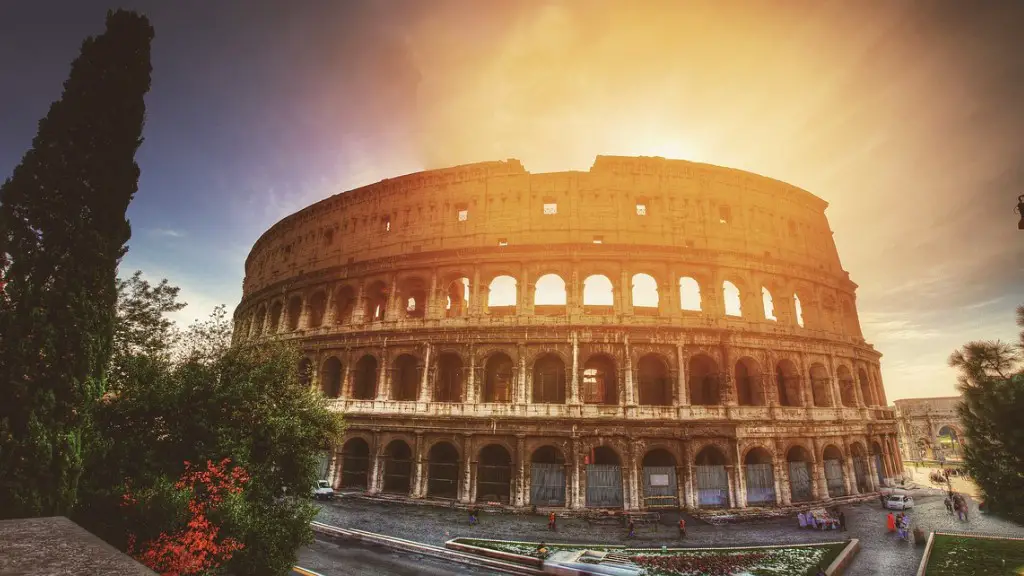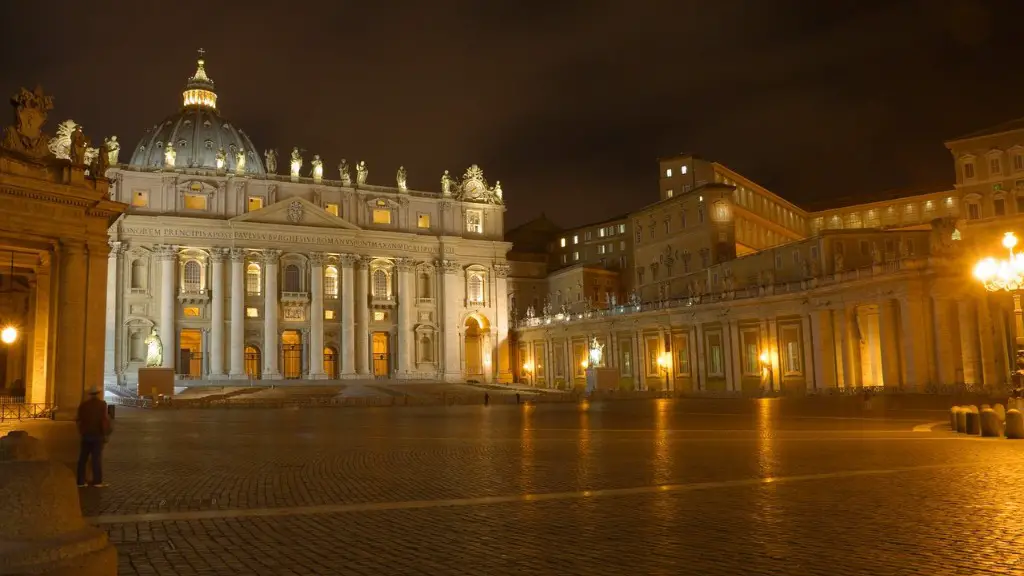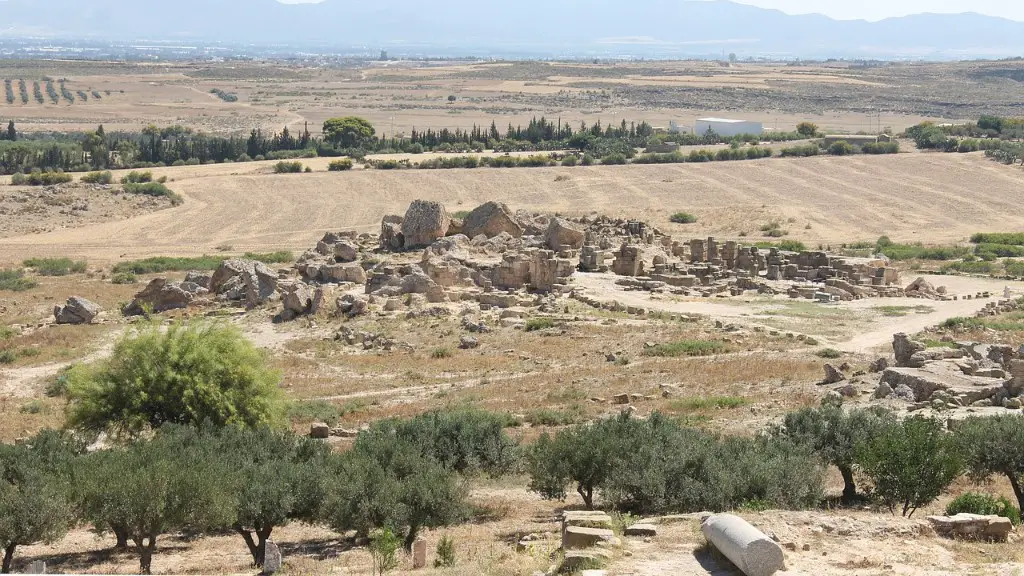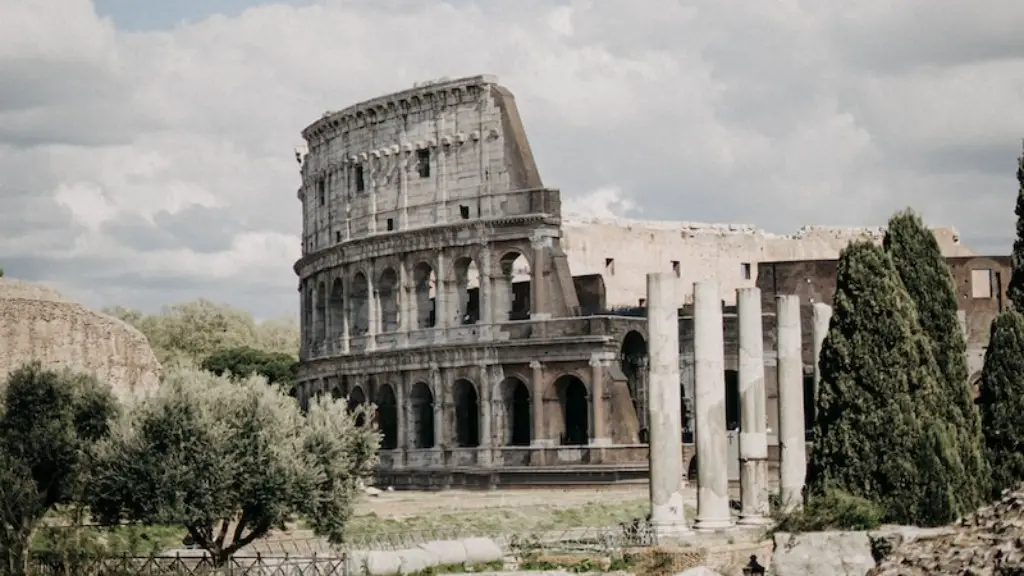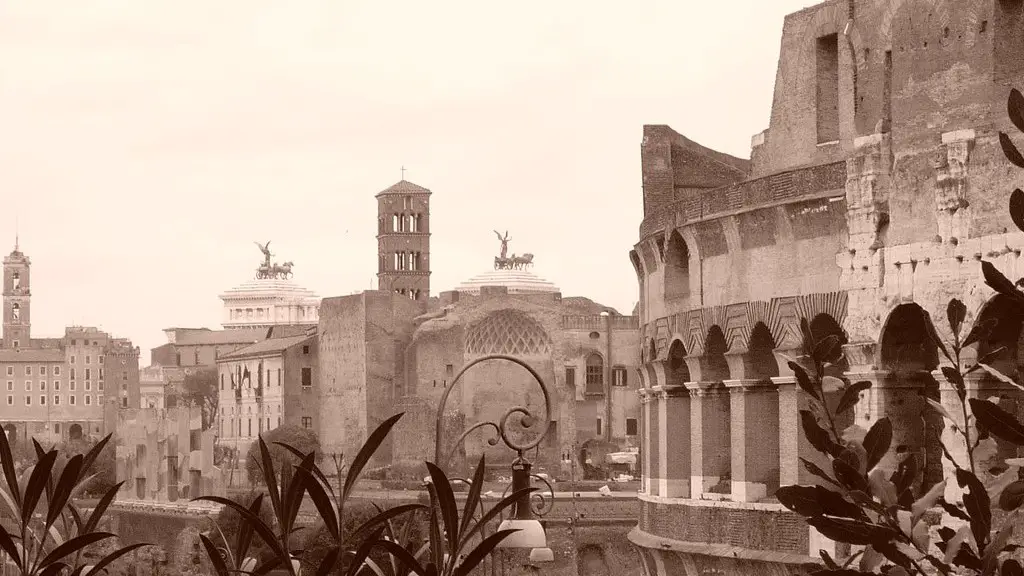What Was Life Really Like in Ancient Rome
The Roman Empire was one of the most influential and enduring in world history, lasting from 27 BC to the fall of the Western Roman Empire in 476 AD. Life in the Roman Empire was vastly different from the life that we know in the 21st century. It was a period of rapid expansion and immense urbanization. The Roman people lived a largely agrarian lifestyle, with most citizens living in rural areas as opposed to cities. In cities, life in ancient Rome for urban citizens was drastically different from that of the rural countryside.
Life in the city was characterized by a complex social hierarchy and a vast amount of inter-city commerce. The citizens of the city were organized into distinct classes, with the wealthy patrician class dominating the majority of the society and controlling much of the wealth and the power. The lower class plebian citizens were often associated with manual labor and other menial tasks. Despite the classes, there was a great degree of social mobility within the city and many plebian citizens were able to ascend to the wealthy patrician class.
In addition to the complex social hierarchy, life in ancient Rome was characterized by a great degree of religious diversity and a thriving culture of extravagant entertainment. Rome was home to numerous gods and goddesses and their worship was a major component of daily life. This worship often manifested itself in magnificent religious ceremonies that used a variety of tools and objects to symbolize the gods and goddesses. Additionally, the Roman people enjoyed a variety of forms of entertainment, including the infamous gladiator games and chariot races. These forms of entertainment provided a form of distraction from the harshness of life in the city.
An important component of life in the city of Rome was its thriving legal system. The Roman legal system was a complex structure of laws and regulations. It was a system built upon the Twelve Tables, a set of tenets that governed the behavior of individuals in the city. This legal system was largely responsible for the development of the city, as it provided the framework for the city’s residents to conduct their business in a structured and orderly manner.
One of the major components of life in the city was its economy. The Roman economy was highly advanced, with a variety of goods and services being offered through the various merchants and traders in the city. The Roman economy was largely based on agriculture, but the trading of goods and services was a major component of the city’s economy. The Roman government also held a great deal of financial power, as it was responsible for the collecting of taxes and other revenues.
Finally, life in the city of Rome was also heavily impacted by its vast network of roads and other infrastructure. This network of roads and other architecture resulted in a great degree of inter-city commerce and communication, allowing for the rapid expansion and flourishing of the Roman Empire. This infrastructure was vital to the success of the city, as it facilitated the easy delivery of goods and services and unrestricted movement of people.
The Role Of Religion
Religion was an important part of everyday life in ancient Rome. The Roman people were deeply religious, worshipping a range of gods and goddesses associated with their daily lives. This included the gods associated with agriculture, trade and other activities that were essential for their everyday lives. Roman religion also included a pantheon of more ‘religious’ gods and goddesses, who were tied to a more abstract concept of deity.
The days of the calendar and subsequent holidays were also tied to religious observance. Roman citizens also frequently celebrated various festivals throughout the year, as well as rituals connected to various gods and goddesses. These rituals typically involved religious activities such as sacrificing animals or burning incense. Religion was also tied to the social aspects of life in the city, as all citizens were expected to observe the religious laws and regulations, regardless of their social class.
One of the major aspects of life in ancient Rome was the presence of religious laws and regulations. Roman legislation was heavily influenced by religious customs and traditions. This included various laws that punished individuals for disobeying religious rules and regulations. The Roman government was also heavily influenced by religious power, as certain religious leaders had a great deal of influence over government decisions and policy.
The Roman Catholic Church also had a significant presence in Rome. The Church was an important force behind the propagation and promotion of a particular Christian faith. This faith was heavily tied to the Roman Catholic Church, as its teachings and doctrines had a major impact on Roman life and culture. The Church was also heavily involved in the education of Roman citizens, as it hosted a variety of educational institutes and seminaries for those wishing to study religion.
Roman Architecture And Engineering
Roman architecture and engineering was one of the major achievements of the Roman Empire. This architectural tradition was heavily influenced by a range of cultures, including Greek, Etruscan and Egyptian styles. The Roman people built a variety of structures, including roads, monuments, buildings and temples. These structures were often very elaborate, utilizing a variety of materials and techniques.
The most iconic example of Roman architecture is the Colosseum. The Colosseum was a massive amphitheater that could hold up to 50,000 people. It was one of the major venues for gladiator games, chariot races and other events. The Colosseum utilized a variety of Roman engineering techniques, including concrete and arches, to create its iconic structure.
The Romans also built a vast network of roads and aqueducts throughout their empire. These infrastructure projects enabled the rapid expansion of the empire and allowed the citizens of the empire to travel and trade freely. These roads and aqueducts were constructed using advanced techniques, such as the use of arches and mortar, to create structures that were far more durable than those used by earlier societies.
In addition to their vast network of roads and aqueducts, the Romans also built a variety of other structures, including triumphal arches, baths and aqueducts. These structures served both practical and decorative functions. The Romans also utilized a variety of tools and machines to help construct their structures, including cranes, levers and pulleys.
The Contributions of Roman Culture
The rich culture of the Roman Empire was an important factor in its success. Roman culture was heavily rooted in its Classical Greek predecessors, but also possessed a unique identity that was heavily influenced by its vast network of different cultures. The Roman people used a variety of literature, art and music to express their culture, often utilizing various forms of satire and humor to illustrate their thoughts and ideas.
The legacy of Roman culture was felt far and wide, as the Roman Empire’s impact stretched across vast swaths of the world. The Roman people utilized various forms of governmental structures, such as the Senate and judicial system, that are still in use today. Roman culture also had a major influence on the development of Christianity, as the spread of Christianity across Europe was largely due to the efforts of the Roman Empire.
Roman culture had a major impact on art and architecture. The Roman people utilized a variety of forms of art and architecture to express their culture and beliefs. These forms of art included portraiture, sculpture and mosaics, as well as a variety of frescoes and murals. The artwork of the Roman Empire was heavily influenced by its Classical predecessors, but also possessed a unique identity of its own.
Finally, the Roman culture was also reflected in its advanced language and literature. Latin, the official language of the Roman Empire, is still in use today in various forms. Roman literature, which was heavily influenced by its Classical predecessors, is still studied and enjoyed by many today. The language, literature and culture of the Roman Empire are still felt in the modern world, and its legacy continues to this day.
Daily Life In Ancient Rome
Daily life in the Roman Empire was largely a product of the city’s complex social structure and its vast network of roads and infrastructure. Life in Rome was highly structured and regulated, with the various classes of citizens all having distinct roles to play in society. Despite this, Roman citizens did still have a great deal of social mobility, as it was possible for those of the lower classes to ascend to the much wealthier patrician class.
Day-to-day life in ancient Rome revolved around the importance of religion, as the Roman people were intensely devoted to their religion. This devotion manifested itself in religious ceremonies and rituals, as well as various festivals and holidays. In addition to religious activities, Roman citizens also enjoyed a variety of forms of entertainment, including chariot races, gladiator games and theatrical performances.
In terms of economics, the Roman people were heavily reliant on agriculture, as well as the trading of goods and services that were provided by merchants and traders. This trade was facilitated by the presence of the extensive network of roads, aqueducts and other infrastructure that allowed for rapid movement of wealth and goods throughout the Empire. This network also allowed for the rapid expansion of the Empire and was largely responsible for the establishment of Roman cities in vast swaths of Europe, Africa and the Middle East.
Finally, the Roman people had a highly developed legal system that was responsible for ensuring civility and order in the city. This system was based upon the Twelve Tables, a set of tenets that were employed to regulate the behavior of the people. This legal system was heavily influenced by religious beliefs and customs, as well as stoic philosophy, and was responsible for the establishment of laws and regulations that were necessary for ensuring the stability and prosperity of the Roman Empire.
The Collapse Of The Roman Empire
The Roman Empire endured for centuries before it eventually collapsed. The causes of the collapse of the Roman Empire are numerous, but are generally agreed upon by most historians. The collapse of the Roman Empire was mainly the result of internal political strife and the eventual barbarian invasions that caused a great amount of damage and chaos within the Empire.
The political state of the Roman Empire had been in a state of decline for several centuries prior to its collapse. This decline was largely due to infighting amongst the Roman aristocracy, as there was a great deal of disagreement between the various factions of the ruling class. This resulted in a great deal of political instability, which eventually caused the Empire to fracture and become more susceptible to external forces.
The barbarian invasions of the Roman Empire were also a major factor in its eventual collapse. These barbarian groups, most notably the Visigoths, the Huns and the Vandals, caused immense damage to the Roman Empire and its infrastructure. This destruction included damage to its roads, buildings and public services, as well as large-scale destruction to its cities and settlements.
Finally, it appears that the Roman economy was in a state of decline during the latter years of the empire. This economic decline was likely the result of a combination of factors, including the influx of barbarian groups and the political instability within the Empire. This economic decline weakened the financial state of the Empire, which ultimately resulted in its eventual collapse.
